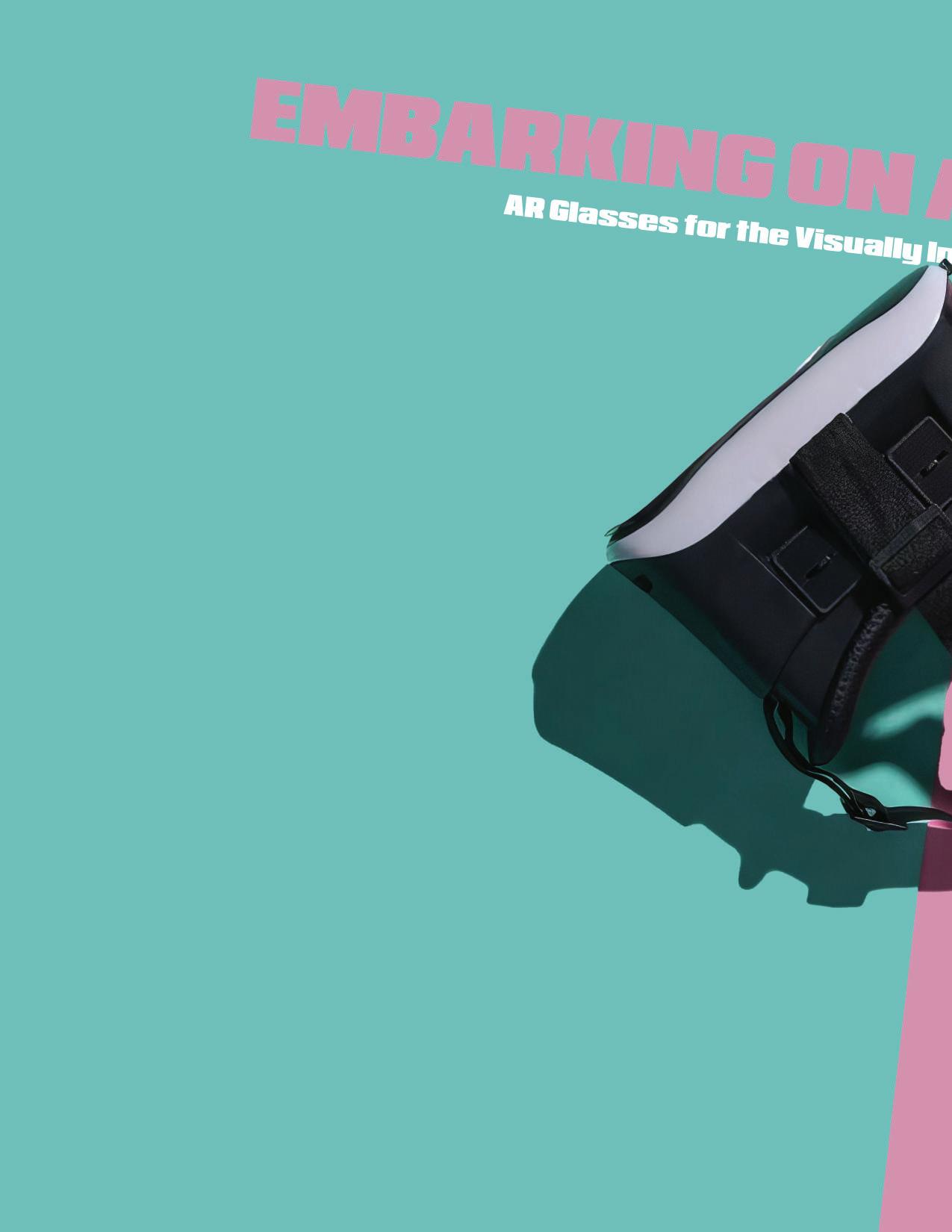
3 minute read
EMBARKING ON A TECH ODYSSEY
from CHAIN - Issue I, Nov 2023
by CHAIN
BY AKRAM SALLOUM
We may use our strengths for the greater good in the age of technology and entrepreneurship by thinking of ideas to tackle minor everyday problems, even if we consider them “minor.” Some people may regard them as game changers. In this article, we will discuss various earlier concepts and merge them into an idea to help a larger group of individuals improve their lives.
In the not-so-distant past, the seamless integration of technology into the daily lives of individuals with impairments felt like an elusive dream. Fast forward to the present, and we stand at the precipice of an extraordinary transformation, particularly for those grappling with visual impairments or hearing challenges.
Let’s dive into aiding the visually impaired, with machine learning taking center stage. Envision AR glasses that recognize objects or living beings, whether human or animal, but empower the wearer to comprehend their surroundings without relying on vision. This groundbreaking innovation isn’t solely transformative for those considered blind; it’s equally revolutionary for individuals who are legally blind. Delivering information through bone conduction, akin to having a personal speaker at their ears.
The trail of innovation doesn’t run cold there. These cutting-edge glasses are poised to redefine how we assist those with hearing challenges. Imagine the glasses reading lips with embedded microphones, seamlessly processed by an avant-garde machine learning algorithm. Subtitles gracefully dance across the lenses, unlocking a world of communication. Users respond with sign language, their gestures effortlessly translated and echoed through the actual speakers in the glasses.
Now, let’s explore the design. Visualize 3D printers as the wizards crafting the outer shell of these innovative glasses. Miniature chips, the powerhouses orchestrating the magic, seamlessly process torrents of information. Taking a leaf from Snapchat’s playbook, we incorporate similar camera technology, ensuring top-notch functionality while keeping costs in check. The speaker and microphone combo? Modeled after successful designs, why reinvent the wheel when brilliance already exists?
That isn’t just innovation; it’s business. As of 2021, a staggering 300 million individuals globally that are visual impairments. While some might regain sight through simple, low-cost procedures, our focus sharpens on the rest the estimated 75 million who may have lost hope.
Enter the economic stage. The market for the visually impaired, estimated at $4 billion, isn’t just crucial; it’s a significant opportunity for companies introducing this technology were not just discussing a product; we’re envisioning a billion-dollar industry, a testament to the immense potential when innovation aligns with necessity.
In a world where the once unimaginable becomes reality, AR glasses for the visually impaired and hard of hearing transcend mere solutions to limitations; they redefine the narrative of what’s possible. It’s not just a business; it’s a movement that transforms lives and propels an economic wave, creating ripples of change far beyond the frames of these revolutionary glasses. Brace yourself for the future—one where vision knows no boundaries, and hearing extends beyond mere sound.










